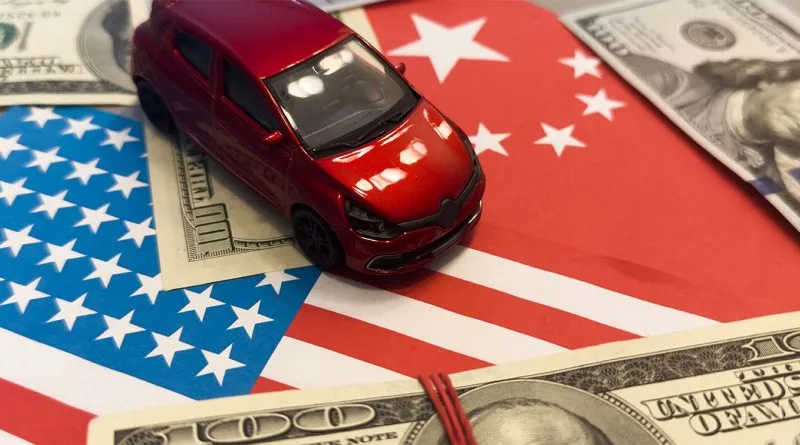The White House’s decision to amend its auto tariff commitments is a clear indication of the strength of the pressure exerted by US manufacturers, and it can be described as a major victory for the industry.
Easing US Auto Tariffs Revitalizes the Industrial Sector After Intense Pressure
In recent months, US trade policy has witnessed volatility and tension due to the imposition of broad 25% Tariffs on imported cars and auto parts.
These tariffs, according to the US administration, were intended to protect national security and encourage domestic manufacturing, but they also threatened to increase costs for domestic companies and disrupt global supply chains.
The US administration responded to these concerns by signing an executive order aimed at mitigating the financial impact of these Tariffs on US auto manufacturers.
These amendments represent a compromise that attempts to balance protecting the domestic industry with reducing the operational burdens imposed by the tariffs.
Highlights of the tariff relief:
Avoiding accumulated tariffs:
Cars have been exempted Imports from separate tariffs imposed on raw materials such as aluminum and steel, a measure aimed at preventing the “piling of duties” on a single product, which increases the overall tariff cost.

Incentive Offsets for Domestic Production:
The 25% duty on auto parts has been modified. Companies that assemble and sell completed vehicles in the United States will be granted an Import Adjustment Offset of up to 3.75% of the MSRP of the domestically produced vehicle in the first year, then reduce to 2.5% in the following year, before being eliminated.
Encouraging Increased US Components:
The goal of the phased-in compensation system is to incentivize companies to increase the percentage of domestic components (US content) in their vehicles over a specified period of time not exceeding two years.
Continued Tariffs on Full Imports:
Despite the modifications, the 25% tariff on fully imported vehicles remains in effect, indicating continued pressure on foreign imports to push companies to manufacture in the United States.
Potential Extension of the Exemption:
Recent reports (October 2025) indicate that the Department of Commerce may announce a possible extension of the exemption. The extension of the rule allowing automakers to reduce their tariffs on imported parts for five years, instead of the previously set two years, provides more breathing room for the sector.
Impacts of the decision on industry and the economy
This move reflected significant relief in the auto industry. Major companies such as General Motors, Ford Motor, and Stellantis faced significant increases in production costs due to the tariffs, threatening higher vehicle prices for consumers and disrupting production networks in North America (the United States, Canada, and Mexico).
The CEOs of these companies welcomed the changes, believing they would help create a more level playing field and mitigate the impact of the tariffs on suppliers and consumers alike.
The temporary exemption, or offset system, also gives companies a valuable respite to redesign their supply chains and move more manufacturing operations to the US, a primary goal of the administration’s trade policy.
Ongoing Challenges:
Despite the relief, the sector continues to face significant challenges. The 25% tariff on imported cars remains Listed, this means that the prices of these vehicles will remain subject to increases.
Furthermore, the lack of clarity on the precise details of how to calculate the compensation for spare parts places companies in a state of uncertainty about future costs.
Political and Economic Dimensions
The relief comes in a sensitive political and economic context. The decision reflects a direct response to pressure from the industrial lobby and the need to protect a vital sector that provides millions of jobs.
It also represents an attempt to demonstrate flexibility in implementing the tariff policy, which has sparked market turmoil and fears of a potential economic slowdown and inflation.
These adjustments are a political message of support for American workers in key states, particularly Michigan, the heartland of the auto industry.
Ultimately, the relief of tariffs on the US auto industry is seen as a smart tactical maneuver aimed at balancing the stated trade objectives—increasing domestic manufacturing—with avoiding the disastrous negative repercussions that costly, comprehensive tariffs could cause for both companies and consumers.
The challenge now lies in the extent to which companies can exploit the temporary relief period to effectively increase domestic components and achieve the complete economic “victory” sought by the US administration.
